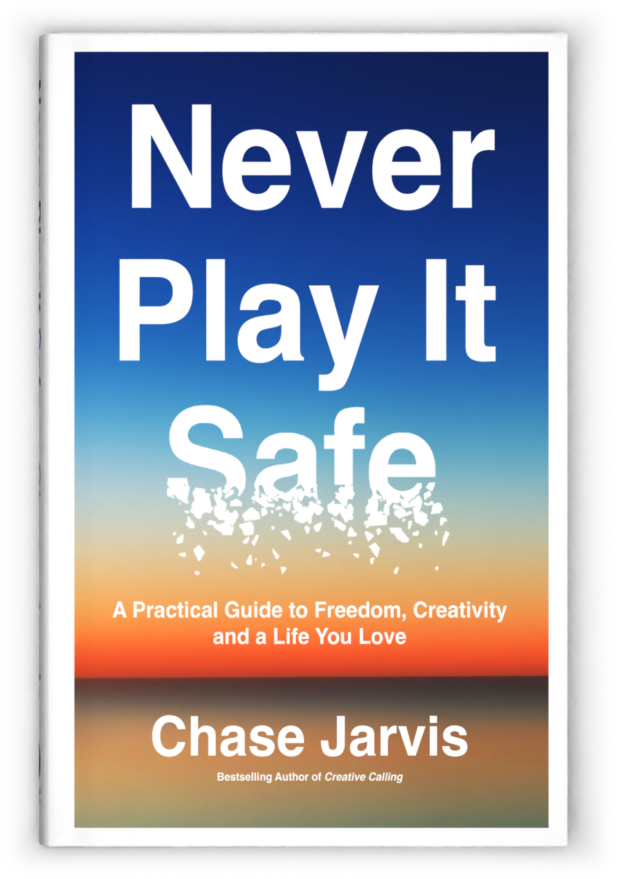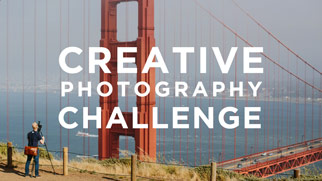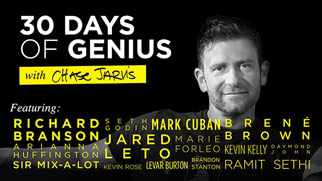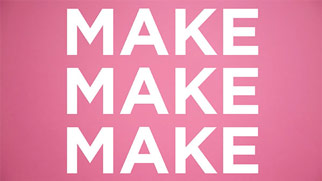The Fine Art world has always been an interest of mine. In fact, I was pursuing a graduate degree in the philosophy of art before I quit to pursue photography full time. Quitting was the result of a waning interest in learning about dead white guys — and it was a good move for me in the long run. Humans have been creating art for our entire history as a species. Creativity is baked into our brains. The proof of this innate need to create dates back more than 30,000 years as evidenced by cave paintings. The art of painting is ancient, storied and deeply textured. Fine art photography, in comparison, is in its infancy. As such, the institutions and art critics are outspoken with their assessment of photography being a “vulgar trespasser” by hanging in the same hallowed halls as paintings. To be honest, I am asking myself, are the critics right? Does fine art photography belong in the same museums as the time-tested art of the brush? My friend Sohail, who will be dropping by the blog from time to time with deep insights on fine art and technology articles, dives into the subject in the following paragraphs. -Chase
It’s a battle that’s been fought since photography arrived on the scene as a medium of visual expression. To its critics, it’s been nothing more than a glorified means of copying or reproducing something. To its proponents, it’s every bit as legitimate an art form as painting and sculpture. Regardless of which side you come down on, photography has always had to struggle to gain acceptance in the fine art world, especially in museums.
Now, one of the most prominent museums in the world is adding a photography exhibit to its repertoire, and there are quite a few folks who aren’t happy about it.
“The truth is,” writes Andrew Graham-Dixon, “that very few photographers have ever produced images with the weight of thought and feeling found in the greatest paintings.”
Graham-Dixon writes for the Telegraph, and he’s talking about “Seduced by Art: Photography Past and Present,” a photography exhibit at the National Gallery in London.
This is the National Gallery’s first major exhibit of photography, and for a number of reasons, it’s being heavily panned by critics. That criticism is stretched into a critique of the place of photography in the world of art.
“Photography,” says Graham-Dixon, “lacks the depth and heft, the thinking sense of touch, that painting possesses.”
Another critic, Brian Sewell, is even harsher in his column for the London Evening Standard.
“Vulgarity is, indeed, the almost common factor among these present-day photographers (most of them fiftyish or so) — the vulgarity of the commonplace subject, the vulgarity of colour, the vulgarity of scale (now common in every current form of art) and the vulgarity of surface, too often utterly repellent.”
The exhibit, he concludes, is “Shoddy, mischievous and gravely mistaken, intellectually the work of students at some post-polytechnic university, those who devised it have seduced the National Gallery, led it astray, debauched and corrupted it.”
Ossian Ward, writing for Timeout London tosses his share of brickbats at the National Gallery as well.
“…they tend to overcomplicate matters and look for obscure lines of influence instead of plumping for the bigger names – why no grandiose Andreas Gursky, no Cindy Sherman self-portraiture, no iconoclastic Andres Serrano, fer chrissakes?”
To be fair, not every review is negative, and Ward does allow that “some of the curatorial discoveries are worth making.”
Some reviews are even positive, like Laura Cummings’ review for The Guardian.
“Seduced By Art is an enthralling show,” she writes, “beautifully selected to express the numerous ways in which painting has inspired or affected the evolution of photography.”
The core argument, though, is one that Graham-Dixon lays out clearly – that the lens is no match for the brush when it comes to art. For those of us who call ourselves photographers, this is a hard claim to swallow.

Richard Learoyd, 'Man with Octopus Tattoo II', 2011. Image Courtesy: The National Gallery, London, UK
The traditional art vs. photography debate isn’t new, but every time photography makes major inroads into the art world, it flares up again.
To be fair, some arguments may be legitimate. As Ossian Ward pointed out, this is the National Gallery’s first outing when it comes to displaying photography, and they may have indeed overthought it, as he suggests.
It’s also possible that the criticism of the photographs, some of which have been commissioned specifically for this exhibit, has a lot to do with the subject matter of those photos. It’s worth wondering why the National Gallery would commission work specifically to fit the theme of their exhibit, which was primarily about drawing a connection between photography and painting.
There’s a real debate worth having here about whether there *is* such a connection, and if there is, why did the National Gallery feel the need to commission new work? Moreover, there’s also a debate to be had about whether photographers need to follow the same mores painters do, both in terms of subject matter and technique. The National Gallery’s attempt to draw this connection in what could be construed as an attempt to legitimize their exhibit may be considered a failure simply because this connection may not exist.
The “subject matter” argument is one that Graham-Dixon makes pretty persuasively when he highlights a moment in his personal experience when he found photography to actually transcend painting.
As for photography equalling, even exceeding, art, I will admit to one moment when I know that it happened — in the work of those photographers who accompanied Scott and Shackleton in the Antarctic, men who in those then unique circumstances had eyes to see that with the coolly calculated technology of their clumsy cameras, they could enhance the ice and snow, the darkness and the light, even the numbing chill of the deep distant south, in ways far beyond the dramatic romanticism of Caspar David Friedrich and Frederick Church, and the dabbing of the Impressionists, their near contemporaries.
Still, he stays close true to his basic premise, claiming that “When the photographer pretends that he is an artist, he is a trespasser.” And, if you define art very narrowly, as “the expression or application of human creative skill and imagination, typically in a visual form such as painting or sculpture,” then you could argue that photography, as a medium where an image is captured, as opposed to being created, is not art.
Yet part of that definition of art, the part about art being “the expression or application of human creative skill and imagination,” can easily be applied to photography. Furthermore, that certain subjects are best left to one medium or another is, again, a hard claim for photographers to swallow.
Of course, it’s also possible that the jeers thrown at National Gallery’s exhibit is just a knee-jerk reaction from old-world critics. After all, it’s only recently that photographs commanding seven-figure sums have become more normal, whereas Paul Cezanne’s “The Card Players” fetched the tidy sum of $267 million from the Royal Family of Qatar in 2011. Photography’s most expensive work, on the other hand, is Andreas Gursky’s “Rhein II”, sold for a comparatively paltry $4.3 million.
Photography as an art form is still young, while painting has been around for thousands of years. It’s pedigree stretches back to pre-history and the cave paintings in Grotte Chauvet, France, that are about 32,000 years old. The next few years will continue to see accelerated evolutions and revolutions in the world of photography, which is barely two hundred years old.
Nonetheless, many of us would argue that it’s time the art world as a whole recognized that the photograph as a piece of art isn’t a fad. It’s not going away. Someone who thinks that photography isn’t as elevated an art form as painting clearly doesn’t have an appreciation of the level of effort that goes into a truly great photograph, and that as more than a few of our photographer friends would say, is quite simply their loss.
__________
Reporting from Sohail Mamdani




























I agree with Mike Warth.
There’s a kind of misunderstanding here. As cameras are just tools, like brushes to painting and chisels to sculpture, photography is just a medium to express anything you want to. Then you can be an artist and use any “artistic” (or not so) mediumm like photography. So is not about photography against any other arts forms because the most important thing in art are ideas, then you choose how you will communicate o develop those.
If you focus the (sometimes endless) discussion on technical aspects, you lose the origin, the concept or ideas that cause your artwork.
Anyone who has ever spent time with a true professional photographer, working in their medium, is aware that they are in the presence of an artist; someone who works every bit as hard as any brush artist.
I am an artist, photographer, technologist and graphic designer, among other things. I don’t claim mastery in any of these disciplines. However, it certainly gives me a platform from which I can make some type of judgement.
Photographers are artists. Like any artistic endeavour, you have masters, who can shape light, shadow and composition so deftly that it is breathtaking, and you have rank amateurs and pretenders, whose clumsy, malformed abominations cause actual retinal burns.
You also have the issue of personal taste. Some folks will just never like, nor acknowledge, the artistic value os some work; simply because they don’t/won’t/can’t understand or like it.
I don’t like cubist art. That doesn’t mean that I refuse to admit that it’s art. However, there are many, many critics who say that cubist art is an abomination, and should be removed from all museums.
Another field that is truly under appreciated, is that of 3D rendered art. The amount of work involved in this can be staggering; easily dwarfing that lavished on an oil painting.
This guy worked for over a year on this: http://radoxist.deviantart.com/art/Worth-enough-73247873
As tools become more accessible to those with more vision than technological chops, the quality of all these mediums will increase exponentially. As schools and tradition form around them, they will become more and more refined.
When any discipline appears, the tools tend to be used by the tool-makers, who don’t necessarily have the vision of an artist. As the tools mature, and become easier to use, and a school of knowledge aggregates around technique, people with vision start to use the medium.
They may seem crude now, but so were the French cave paintings.
Ansel Adams wasn’t an artist then? Sounds like some people don’t know what they are talking about.
Also, a lot of these so called art critics are jumped up toffee nosed prats with the sensibilities of spoilt teenagers, Brian Sewell being a prime example.
Every picture my camera spits is art.
As someone that went to art school for animation and only came to photography by accident, I have to say that there is something about this discussion of art that most photographers simply don’t get. They’ve never labored over a piece for hours, days, or weeks on end just to finish it, toss it to the side, and then start all over. They haven’t done studies of a single hand over and over so that when it’s put into the final piece it’s as close to perfect as it can be. It’s a totally different beast. And while many photographers will say that it’s the rest of the art community that doesn’t get it, as someone that has been on both sides of that fence, I have to say that it’s the photography community that’s wrong on this one.
Actually, photographers do that all the time.
The typical workflow is to take as many photos as possible, then spend hours triaging them, then shortlisting them, then more hours preparing them for presentation.
I have watched photographers sit for half an hour comparing two identical (to my eye) photographs, then select one, and cast away the other, because of the tiniest difference.
In spanish exists a popular proverv which states: De tu arte a mi arte, prefiero miarte.
I sense you are judging by means of the technique and not by means of the results. stated ths way you can conclude that the more time you spend on a particular work the better it becomes, which is of course not true. you can work for years on a piece of crap or get inspired and finish a masterpiece on a matter of hours.
If it moves your emotions and bears the message intended by the person who created it, why won´t you call it art?
Aaaaaand of course there´s a lot of self-called “artists” who produce lots of crap on any “art” subdiscipline.